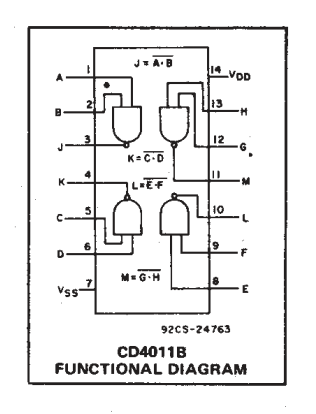I have a NAND logic gate, the top 6 pins appear to be working fine (4x Input, 2x Output) However the bottom 6 pins on the IC appear not to work.
I was testing the IC via an LED, connecting two high currents to the input and then the output to the LED, it works fine for the top half and not for the bottom.

In relation to the pin map above, I have tried pins KCD, LFE, placing a high current into pins C & D expecting a high input from K and also E & F expecting a high input from L.
Is the IC damaged or am I missing something?
The IC is a Texas Instruments CD4011B
Data Sheet: http://www.ti.com/lit/ds/symlink/cd4011b.pdf
Jacob.

